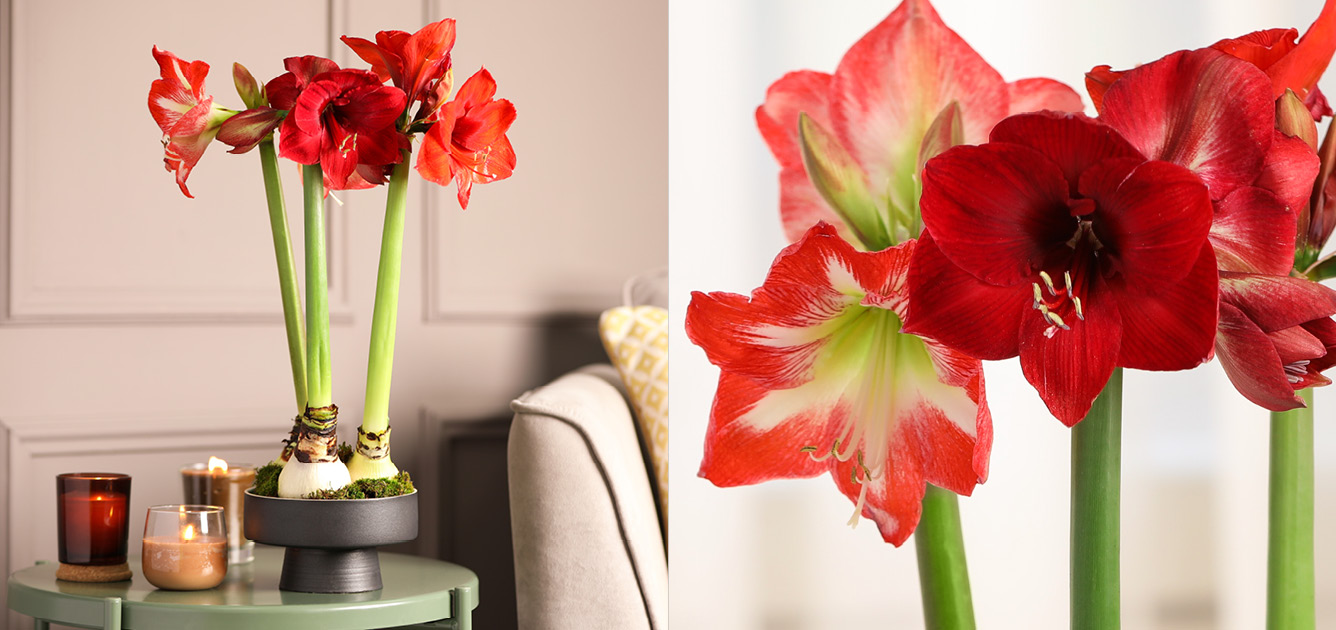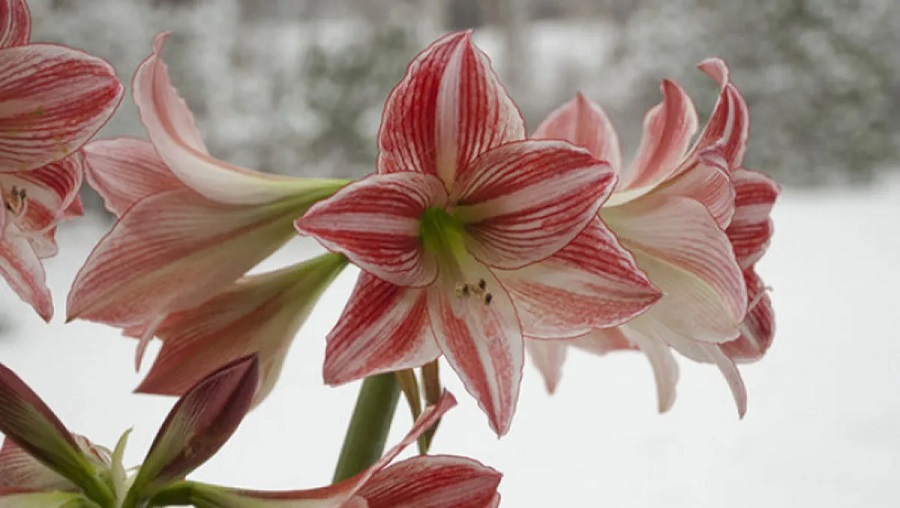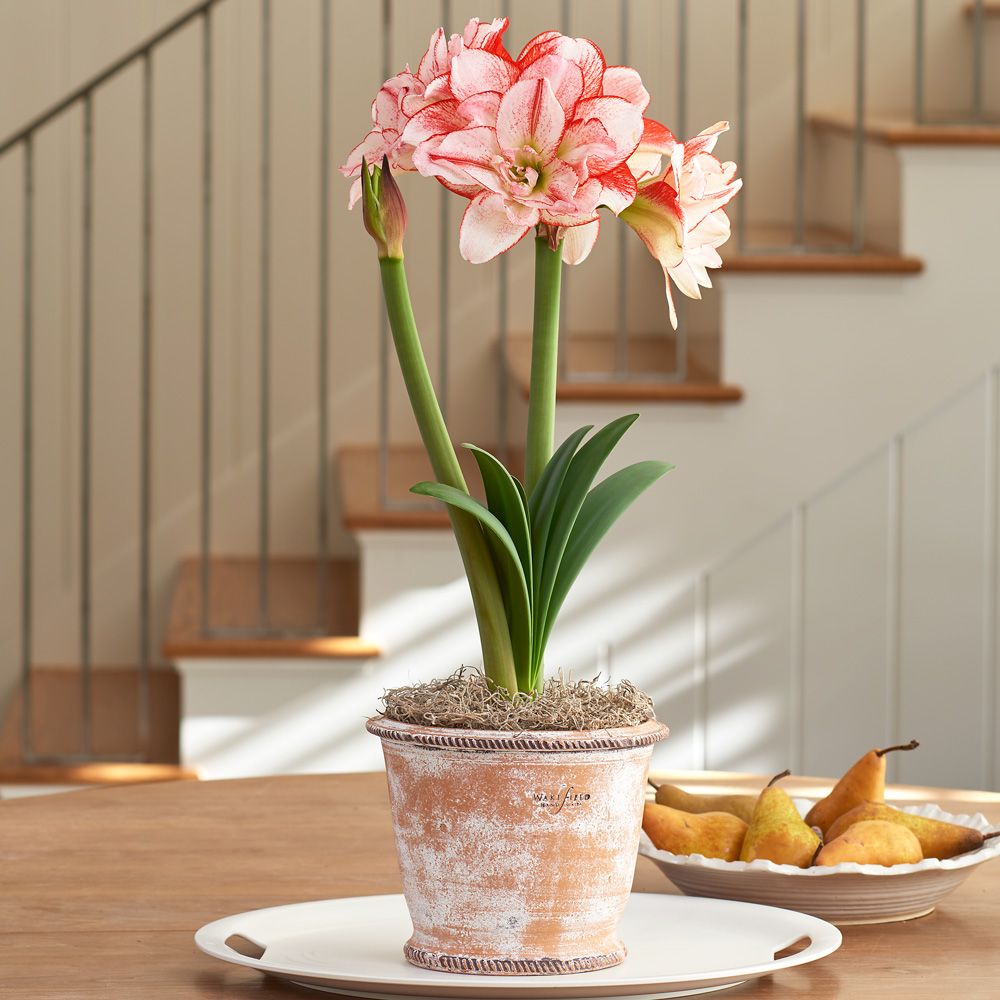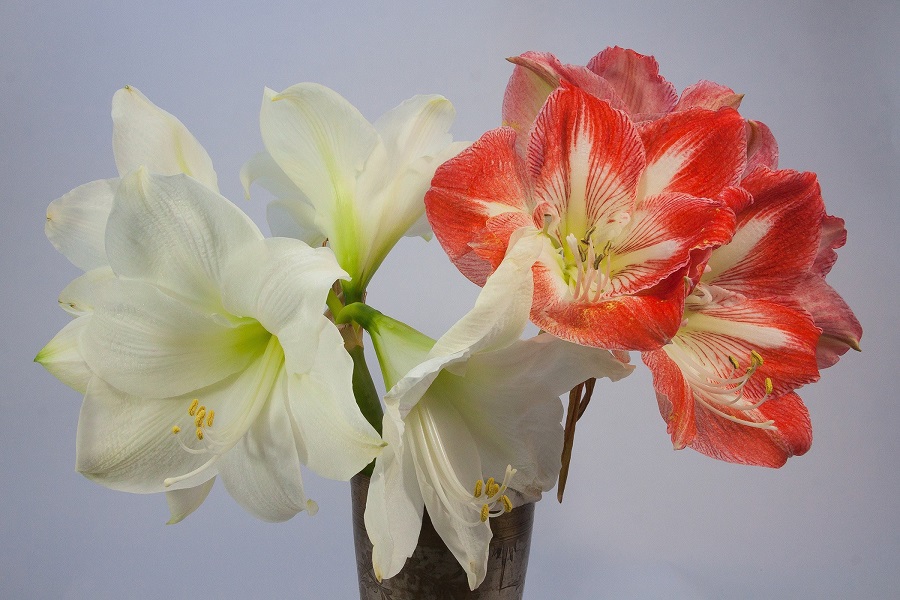¿Cómo Cuidar el Amarilis? Guía para el Cuidado de las Amarilis en Maceta
La amarilis es una planta ornamental en maceta muy popular. Se puede encontrar en muchos hogares, aunque cuidarla puede ser una tarea exigente. Sin embargo, si sigues los consejos de los expertos, podrás hacer de esta planta una auténtica decoración del interior. Compruebe las necesidades de la planta amarilis y aprenda a cuidarla para que crezca estupendamente.

Amaryllis - ¿Qué tipo de planta es?
La amarilis se conoce a veces como Hippeastrum. Sin embargo, si se fijan en los detalles, descubrirán que estas dos plantas son un poco diferentes. El amarilis verdadero se suele plantar en el exterior, mientras que los hippeastrums se mantienen en el interior. No obstante, las plantas se llaman coloquialmente amarilis, por su aspecto similar.
El hippeastrum es originario de Sudamérica, aunque es popular en todas partes, especialmente en Europa. Sorprende con sus hermosas flores. Esta planta necesita condiciones especiales para un crecimiento adecuado.

Amaryllis - las variedades más populares
Hay muchas variedades de amarilis. Se clasifican principalmente según los colores de sus flores. Suelen ser rojas, aunque también hay variedades de amarilis anaranjadas, blancas, rosas o incluso de doble color.
Las amarilis en maceta también se diferencian por el aspecto y el tamaño de sus flores. Hay varias variedades muy populares:
- Mariposa,
- Colibri,
- Diamante,
- Galaxia,
- Araña,
- Trompeta.

Cuidados de la amarilis: ¿qué necesita la planta?
A la Amarilis le gusta crecer en lugares luminosos, pero nunca debe estar expuesta a la luz solar directa. Esto significa que, en lugar de un alféizar, es mejor colocar esta planta, por ejemplo, junto a la puerta del balcón, donde las cortinas bloquean el sol y dispersan los rayos.
Al preparar la maceta, coloque pequeños guijarros en el fondo para el drenaje. La maceta debe ser lo suficientemente grande, con un diámetro no inferior a 20 cm.

Cuidado y riego de las amarilis
La temperatura adecuada es la preocupación básica a la hora de cuidar un amarilis. Una temperatura ambiente de 17-20ºC (62,6-68ºF) es perfecta para todo el año. Tal y como sugieren los expertos, debería trasladar la amarilis a una habitación más fría de 15-16ºC (59-60.8ºF) a finales de agosto, cuando la planta comienza el llamado letargo - el periodo de descanso.
A las amarilis en maceta les gusta el riego frecuente. Téngalo en cuenta para evitar que se pudra. Una vez al mes, puede añadir al agua un abono especial, especialmente durante el periodo de floración. Fortalece la planta y afecta positivamente a los colores de las flores.

Una amarilis en maceta: ¿hay que recortarla?
Las hojas son una parte importante de un amarilis, no las quite bajo ningún concepto. Son el refuerzo natural de la planta. Sin embargo, debe cortar las flores cuando dejen de florecer. Quitarlas evita que la planta de amarilis produzca semillas y la fortalece antes del siguiente período de vegetación.
¿Qué hacer con los bulbos de amarilis después de que florezcan?
Una amarilis necesita un tratamiento especial después de la floración. Gracias a ciertos pasos, se permite que la planta se regenere antes de entrar en la siguiente fase de crecimiento y volver a florecer.
- Como primer paso, deje de regar su amarilis - recomendamos hacerlo en agosto.
- Mueva el recipiente con la planta a una habitación más fría, al menos durante dos meses.
- A continuación, desentierre el bulbo del recipiente.
- Elimine los restos de hojas y raíces muertas.
- Como último paso, plante la amarilis en tierra nueva.
Asegúrate de alimentar la planta después de plantarla de nuevo. Sin embargo, no lo hagas con demasiada frecuencia. Una vez al mes es suficiente.

Cuidado de las amarilis en el interior - enfermedades y plagas comunes
Las enfermedades fúngicas son la mayor amenaza para una planta de amarilis. Pueden aparecer junto con la alta humedad en el contenedor. Por este motivo, debe regar esta planta con moderación.
Algunas plagas, como los trips, suelen aparecer en las macetas con amarilis. Una vez detectado el problema, utilice el producto químico adecuado, que puede adquirir en cualquier tienda de jardinería.

📍 ¿Cuándo dejar de regar una amarilis?
Hay que dejar de regar una planta de amarilis en agosto. Gracias a esto, se puede preparar la planta para otros procedimientos y el período de latencia del bulbo.
📍 ¿Cuánto tiempo florece la amarilis?
La amarilis suele florecer en agosto y florece durante un mes aproximadamente. Deja de florecer en septiembre. Es entonces cuando puedes empezar a preparar la planta para otros elementos.
📍 ¿Cómo cuidar la amarilis para que florezca?
Colocar el bulbo en tierra nueva cada año es el elemento básico para cuidar una amarilis. Después de plantar el bulbo, empieza a alimentar la planta. Asegúrate de que la temperatura es la adecuada y no riegues en exceso la tierra.
📍 ¿Cuándo cortar las hojas de amarilis?
No debes cortar las hojas de una amarilis. Éstas fortalecen la planta de forma natural. Mucha gente confunde el recorte de un amarilis con la eliminación de sus hojas, mientras que sólo hay que cortar las flores cuando dejan de florecer.
Artículos destacados




